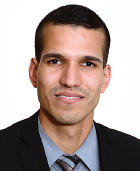Residents Bring APAF’s ‘Typical or Troubled’ Program to Puerto Rico
Abstract

Being a full-time teacher is a difficult job, especially considering that a variety of psychosocial stressors, mental health concerns, and health as a whole can affect school children’s academic performance. It is estimated that 1 in 5 children has or will have a severe mental health disorder. According to the American Association for World Health, 9 of 10 people who develop a mental disorder show warning signs during their teen years. It is for this reason that teachers must have proper training in identifying and interacting with at-risk children. It is also essential that teachers know who to refer these children to.
This year, through the support of APA, we were able to visit a series of schools in Vieques, Puerto Rico, as part of our third consecutive APA Mental Health Awareness Tour. Vieques Island is a forgotten paradise that is in trouble. It lies about eight miles east of the Puerto Rican mainland and measures about 21 miles long by 4 miles wide. Vieques’s youth suffer challenges that other adolescents from the main island of Puerto Rico do not. There are no full-time mental health professionals or hospital on the island, leaving the quality of mental health services to be minimal at best. There is also limited transportation to the main island—few ferries and overpriced airplanes. There are no universities and very few job opportunities on the island. Those with more persistent mental health challenges usually do very well with treatment, peer and professional support and services, and a family and social support network. However, without treatment, resources, and proper support, individuals are not able to thrive. Unfortunately, the limited resources on the island have been reflected at the schools.
During this recent visit, our efforts included the implementation of Typical or Troubled, a school-based mental health education program created by the American Psychiatric Association Foundation (APAF); the APAF also offers a variety of professional education opportunities to provide training within the field of psychiatry for residents and fellows in research, public health, education, and leadership.
Our bilingual team consisted of a teacher, a medical student, one psychiatry resident, and three psychiatrists who represented the subspecialties of child and adolescent, consultation liaison, and addiction psychiatry. We tailored the Typical or Troubled curriculum to fit the high school’s needs in Puerto Rico for an effective intervention. To better understand the student population in Vieques, we also distributed surveys to the students at the three main schools on the island. The purpose of the survey was to better understand the students’ knowledge and exposure to illicit substances. These surveys were developed in collaboration with Carlos Albizu Campos University.
The participants included social workers, nurses, teachers, and family members, all of whom have encountered signs and symptoms of mental difficulties among their students. Some of them talked about their biggest issue: staff capacity.
“We have almost 300 students in our school and one full-time nurse, one full-time mental health counselor, and no full-time general psychiatrist or psychologists on the island,” Asunción Rivera explained. It was clear that without adequate mental health services in schools, the burden falls on the teachers. The first step in addressing these mental health needs is to help teachers recognize mental health disorders when they encounter them.
The APAF recommends as part of its Typical or Troubled program the following three steps to help raise awareness, recognize symptoms early, and provide resources to address burnout and possible mental illness:
Notice if you are seeing troubling signs in a student. You may also share what you’re noticing with other teachers to confirm whether they are seeing these same signs.
Talk with the student. Ask how he or she is doing and suggest a talk with someone on the mental health staff. Even offer to take the student to the appropriate counselor. You can focus on observable behaviors or actions you’ve noticed.
Act by sharing what you’ve noticed with the school mental health staff. This will put it on their radar screen and get the student connected to help. Due to confidentiality, however, they may not be able to share information with you regarding the student’s diagnosis.
It is time for better prevention and intervention. We understand that meeting the students and staff members at the school offered an opportunity to bridge a significant gap in preventing and treating mental health disorders. We hope that by better understanding their need and current resources, we will be able to assist in the creation of more and better supports and services, more effective educational programs to further adapt our Mental Health Tour, and, ultimately, healthier children and adults. ■



